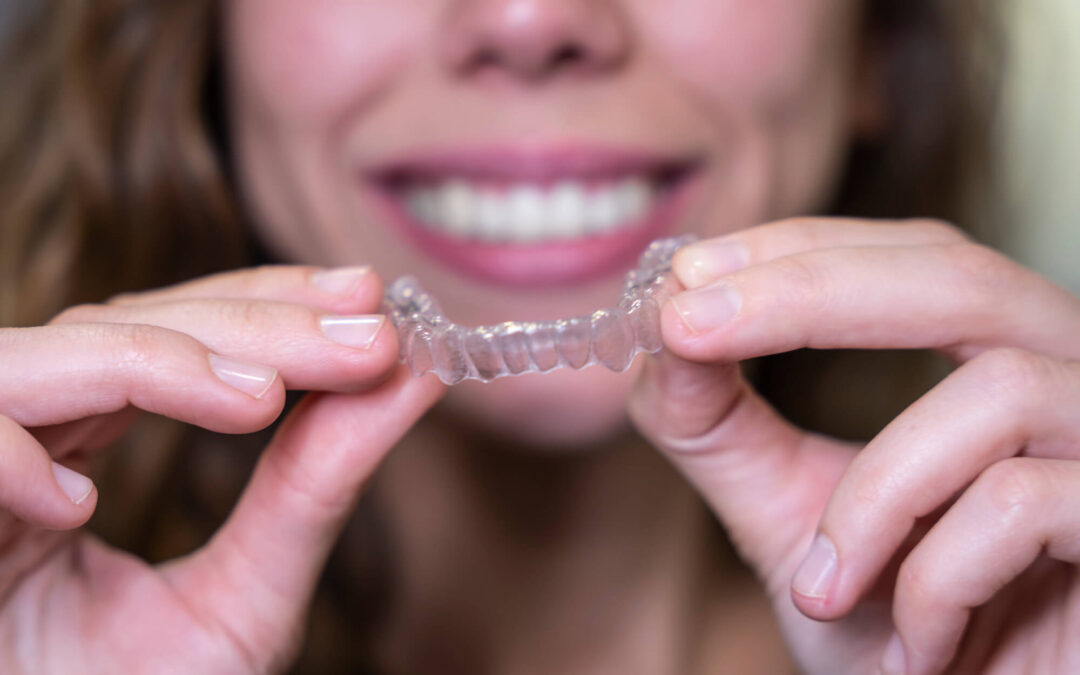Invisalign straightens teeth effectively and more discreetly than traditional metal braces. Even though Invisalign has been available for some time, patients continue to enquire about it.
As with any innovative treatment, there are questions about its effectiveness. The Invisalign FAQs below provide quick responses to some of the common questions, or you can click here to learn more about Invisalign treatment.
Without the use of wires, elastic bands, or obvious alterations, Invisalign straightens teeth. The advantages include being more comfortable and discreet than conventional braces.
Our patients want to know how Invisalign gaps and crowding compare to traditional braces. What the Invisalign aligner can and cannot accomplish is explained in our Invisalign FAQ.
Can Invisalign alter the jawline?
Invisalign may cause your jaw to move. Depending on how much movement is required, your dentist may move your jaw before treatment.
Attachments and rubber brands may be used in conjunction with Invisalign to shift the teeth and jaw into (the)appropriate place for a healthy bite.
Invisalign for crowding?
Crowding may be corrected using Invisalign. Crowded teeth may result from early tooth loss, poorly formed teeth, or a lip or palate cleft. Invisalign corrects these irregularities by applying continuous, gentle pressure.
Teeth that are very crowded may need extraction. Invisalign straightens crowded teeth by relocating each tooth 0.2mm with each new aligner.
Gaps in Invisalign?
Invisalign fills in the gaps. Gaps are vacant areas between your teeth. This may result in food being stuck between teeth and gum disease.
Invisalign is one of the quickest methods to close gaps, but every mouth is unique. Each aligner in Invisalign moves teeth by 0.2mm.
In severe cases, aligners must be worn after treatment.
Molars with Invisalign?
Molars are moved by Invisalign. Even with regular braces, molars may be uncomfortable and difficult to move or straighten.
Molars are moved by Invisalign in the same way as regular teeth, however it may take longer depending on their severity. Molar migration may manifest itself in a variety of ways.
Overbite with Invisalign?
Overbites are corrected using Invisalign. Overbites, a common dental issue, may be treated with Invisalign.
Treatments for age-related overbite include:
- Overbite for adults may be treated with Invisalign alone, but more severe cases need additional treatment. In more difficult cases, elastic bands or a motion appliance are required.
Overbites may be treated using Invisalign.
Underbite with Invisalign?
Underbites are corrected using Invisalign. If left untreated, underbites may lead to tooth damage, poor oral hygiene, and other problems.
When your bottom teeth protrude over your top teeth, you have an underbite.
Underbites may be treated with Invisalign, but severe cases may need surgery or elastic bands and wires.
Does Invisalign cause tooth damage?
Yes, if the proper standards are not followed, Invisalign might cause tooth damage.
Invisalign may be unpleasant, especially if you have a fresh, tighter set. This should not be harmful to your teeth though.
Generally speaking, Invisalign works by stimulating cells in the roots of teeth. This seldom results in tooth damage.
Invisalign during the night?
Invisalign should be worn when sleeping. Only remove Invisalign for eating, drinking, brushing, and flossing.
The more time you spend wearing Invisalign, the better. Otherwise, the benefits vanish and the movements resume.
Night guard for Invisalign?
It depends on the severity. You cannot get Invisalign if you grind your teeth and need a nightguard. Invisalign needs you to wear your aligners while sleeping, something a night guard does not allow.
If you grind your teeth sometimes, Invisalign may act as a buffer. Grinding and clenching may cause Invisalign to break or crack.
Your orthodontist will assess your situation to see whether you are eligible.
Is Invisalign uncomfortable?
Invisalign is uncomfortable the first time you wear them. In comparison, Invisalign braces are less painful, less noticeable, and more comfortable than traditional braces.
Invisalign may be painful for some patients, especially when beginning with a new aligner. This ache will go away gradually after your teeth adjust.
Speech with Invisalign?
Speech is unaffected by Invisalign. Speech changes are possible but unlikely. If this is the case, your tongue should adapt fast to the aligner.






